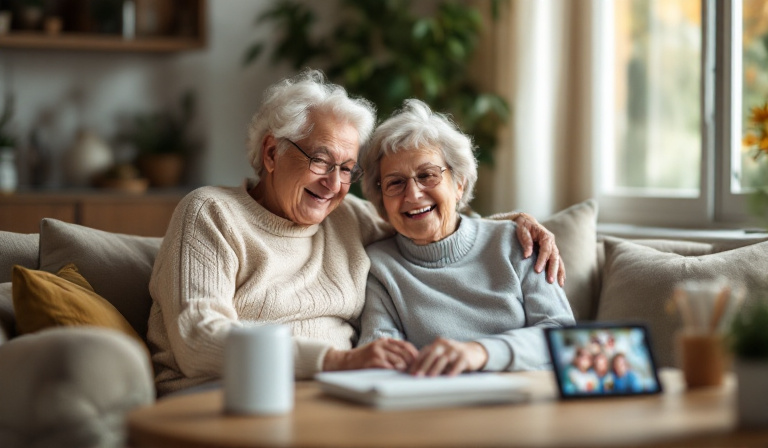
As we gracefully age, safety becomes a paramount concern, not only for older adults themselves but also for their caregivers. Ensuring a safe living environment and lifestyle can substantially enhance the well-being of seniors. This article provides practical safety and security tips that can help protect older adults and offer peace of mind for caregivers.
Home Safety Measures
Home is where we feel most secure, but it also needs to be adapted to meet the evolving needs of older adults. Here are some strategies to enhance home safety:
- Eliminate Tripping Hazards: Ensure that walkways are clear of clutter, loose rugs, and electrical cords. Install non-slip mats in bathrooms and kitchens.
- Improve Lighting: Adequate lighting reduces the risk of falls. Consider installing night lights in hallways and staircases.
- Secure Handrails and Grab Bars: Installing handrails on both sides of staircases and grab bars in bathrooms can provide essential support.
- Fire Safety: Ensure that smoke detectors are installed and functioning. Have a fire extinguisher accessible and regularly review the fire escape plan.
- Emergency Contacts: Keep a list of emergency numbers by the phone and ensure that all phones are easily accessible.
Financial Safety and Fraud Prevention
Older adults can be prime targets for financial scams. Here are ways to protect against fraud:
- Be Skeptical of Unsolicited Calls: Encourage seniors to hang up on any phone call asking for personal information or money.
- Secure Personal Information: Store important documents like bank statements and Social Security cards in a safe place.
- Review Bank Statements Regularly: Encourage regular monitoring of financial accounts to spot unauthorized transactions.
- Educate About Common Scams: Discuss prevalent scams, such as fake charity requests or lottery schemes, and how to avoid them.
Health and Wellness Safety
Maintaining health and wellness is crucial as we age. Here are some tips to ensure safety in this area:
- Medication Management: Use pill organizers and set reminders to take medications on time. Regularly review medications with healthcare providers.
- Regular Health Check-ups: Schedule regular visits to healthcare providers to monitor health conditions and adjust treatments as needed.
- Stay Active: Encourage regular physical activity suited to the senior's ability to maintain strength, balance, and overall health.
- Nutrition and Hydration: Ensure a balanced diet and adequate hydration to support overall health and prevent conditions exacerbated by poor nutrition.
Community and Social Safety
Social interactions are vital for mental health and safety. Here's how to foster a secure and engaging social life:
- Stay Connected: Encourage regular communication with family and friends, whether through visits, phone calls, or video chats.
- Community Programs: Participate in community events or senior centers to build a supportive social network.
- Transportation Safety: Ensure safe transportation options are available, whether through public transit, ride-sharing, or community shuttle services.
Technological Safety
Technology can greatly enhance safety but also comes with its own risks. Here’s how to navigate technology safely:
- Use Trusted Devices and Software: Ensure that devices are secure and software is up to date. Consider installing antivirus protection.
- Educate on Internet Safety: Teach seniors to recognize phishing attempts and the importance of using strong, unique passwords.
- Utilize Safety Apps: Consider apps designed for seniors, such as those that provide medication reminders or emergency alerts.
Caregiver Support
Caregivers play a crucial role in the safety of older adults. Here are some tips for caregivers:
- Communication is Key: Maintain open communication with the senior and their healthcare providers to ensure all safety measures are understood and implemented.
- Self-Care for Caregivers: Caregiving can be demanding, so it’s essential for caregivers to also care for their own physical and mental health.
- Emergency Preparedness: Have a plan in place for emergencies, including contacts, healthcare information, and a clear understanding of medical needs.
Safety for older adults involves a comprehensive approach that covers physical, financial, and emotional aspects. By implementing these tips, seniors and their caregivers can create a safe and secure environment that promotes independence and peace of mind.

